There’s something incredibly satisfying about harvesting a crunchy, fresh cucumber right from your own garden. I’ve been growing cucumbers for years and consider them one of the easiest and most rewarding veggies to cultivate.
Their juicy crunch, versatility in recipes, and health benefits make them a must-have in any garden. If you’re thinking about growing cucumbers or looking for some expert tips to up your cucumber game, you’ve come to the right place.
Benefits of Growing Cucumbers
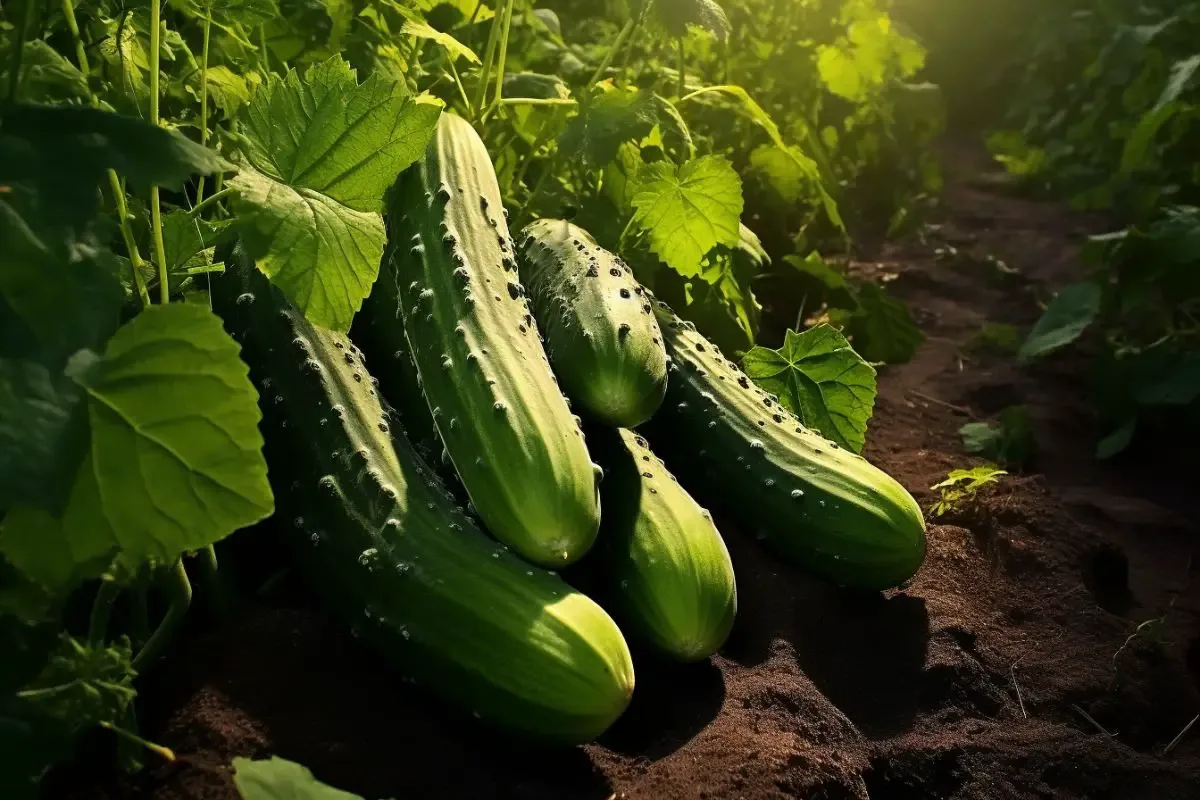
1. Nutritional Powerhouse
Cucumbers are not only refreshing but also packed with vitamins and minerals. They are rich in vitamin K, essential for bone health, and vitamin C, an antioxidant that’s great for skin health. Not to mention, they keep you hydrated since they are made up of about 95% water!
2. Economical
Let’s face it, store-bought cucumbers can sometimes be pricey, especially if you’re opting for organic. Growing your own ensures that you have a steady supply throughout the summer without breaking the bank. Plus, nothing beats the taste of a freshly picked cucumber.
3. Pest Control
Here’s a little secret: Cucumbers can be a great companion plant. They can deter pests like aphids from neighboring plants. So, not only do you get to enjoy the fruits of your labor, but your garden will also thank you!
My Favorite Cucumber Varieties
There’s a wide range of cucumber varieties out there, each with its own unique taste, texture, and purpose. Over the years, I’ve tried numerous types, but here are my top three favorites:
1. Marketmore 76
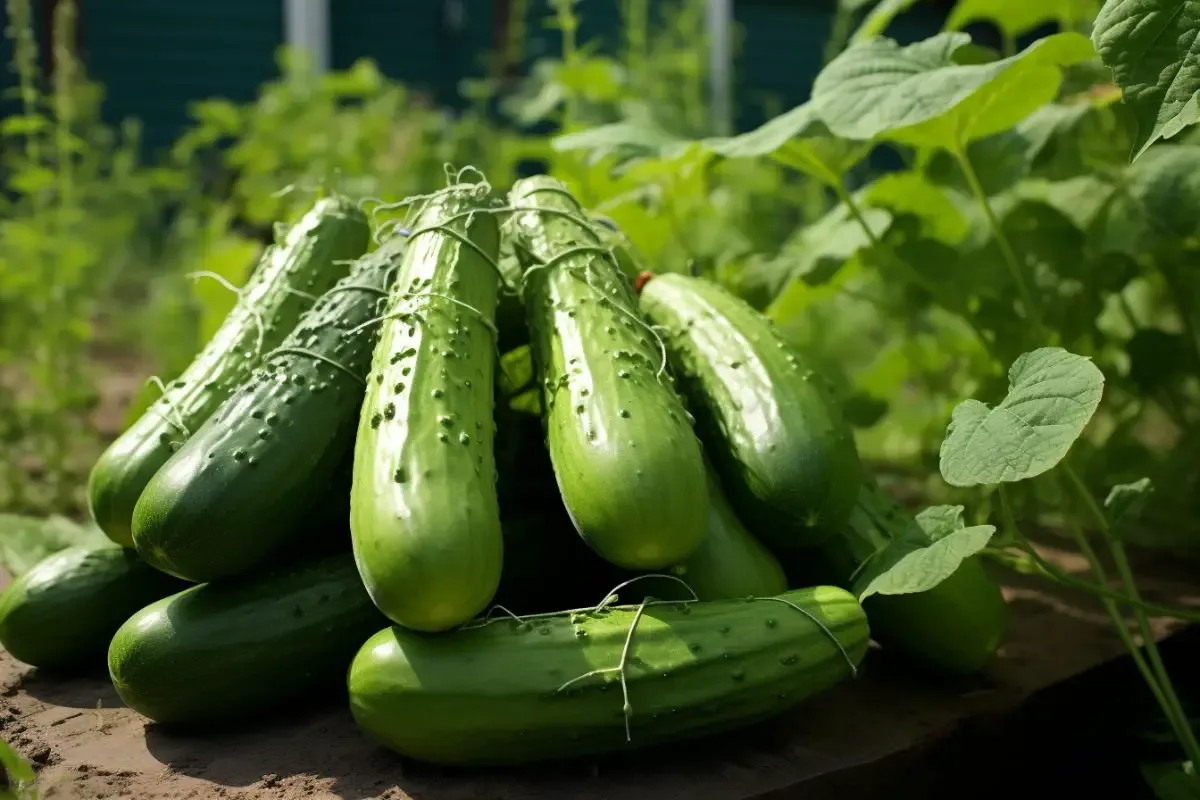
This is your classic slicing cucumber. It produces dark green, long fruits perfect for salads and sandwiches. What I love most about Marketmore 76 is its resistance to common cucumber diseases. Plus, it’s consistent in its growth and gives a bountiful harvest.
2. Lemon Cucumber
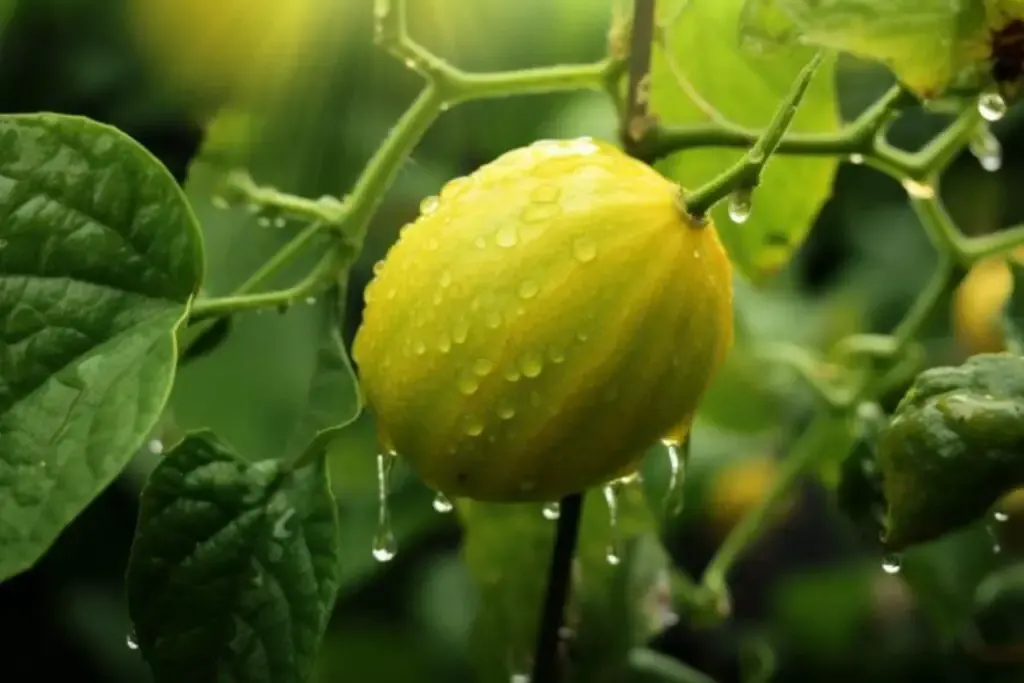
Don’t be fooled by its name or its round, yellow appearance. While it does look like a lemon, this cucumber variety is sweet and crunchy. It’s a conversation starter in the garden and on the table. Great for pickling or eating fresh!
3. Persian Cucumbers
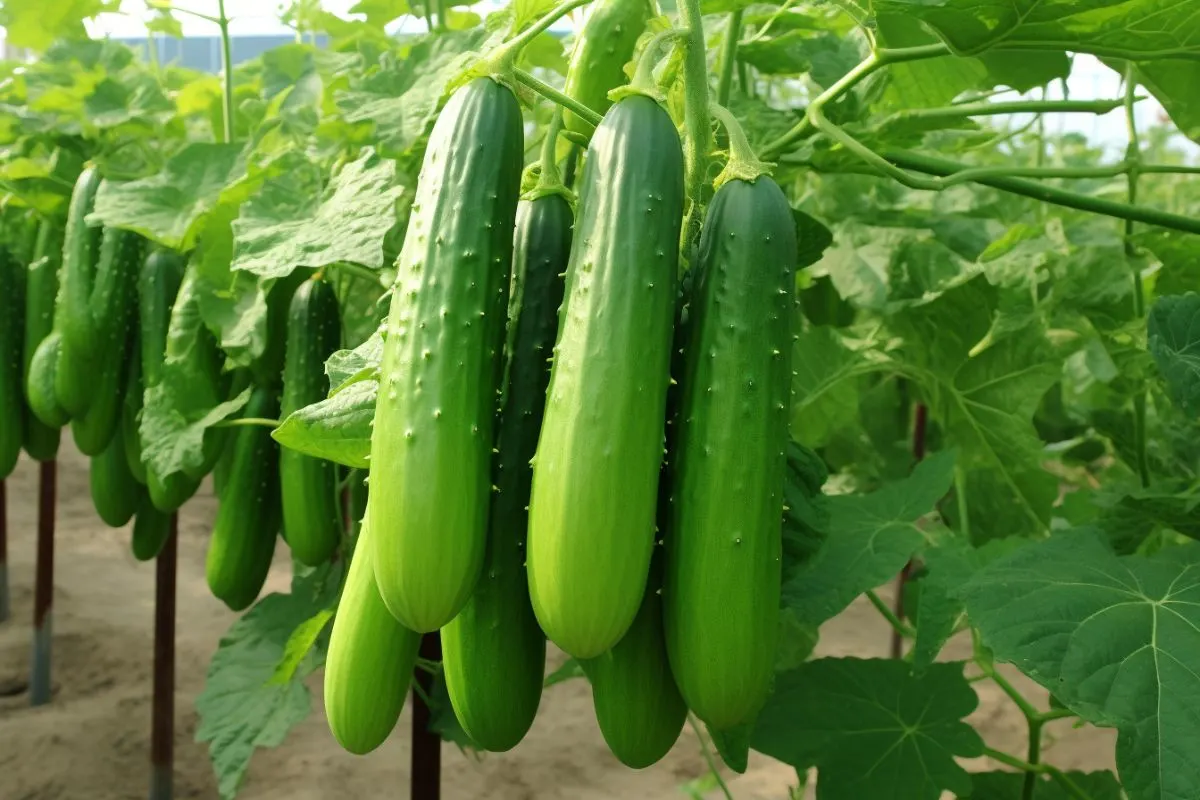
These are smaller and slimmer than your typical cucumber. They have a thin skin, which means no peeling is necessary. I adore their crisp texture and the fact that they are nearly seedless. They’re perfect for snacking or adding to your water for a refreshing twist.
Cucumber Care
Cucumbers, as rewarding as they are, do require some specific care to ensure they thrive. From my years of gardening, I’ve developed a set of guidelines that will give your cucumbers the best chance of producing a hearty and delicious crop. Let’s dive into the details.
Planting
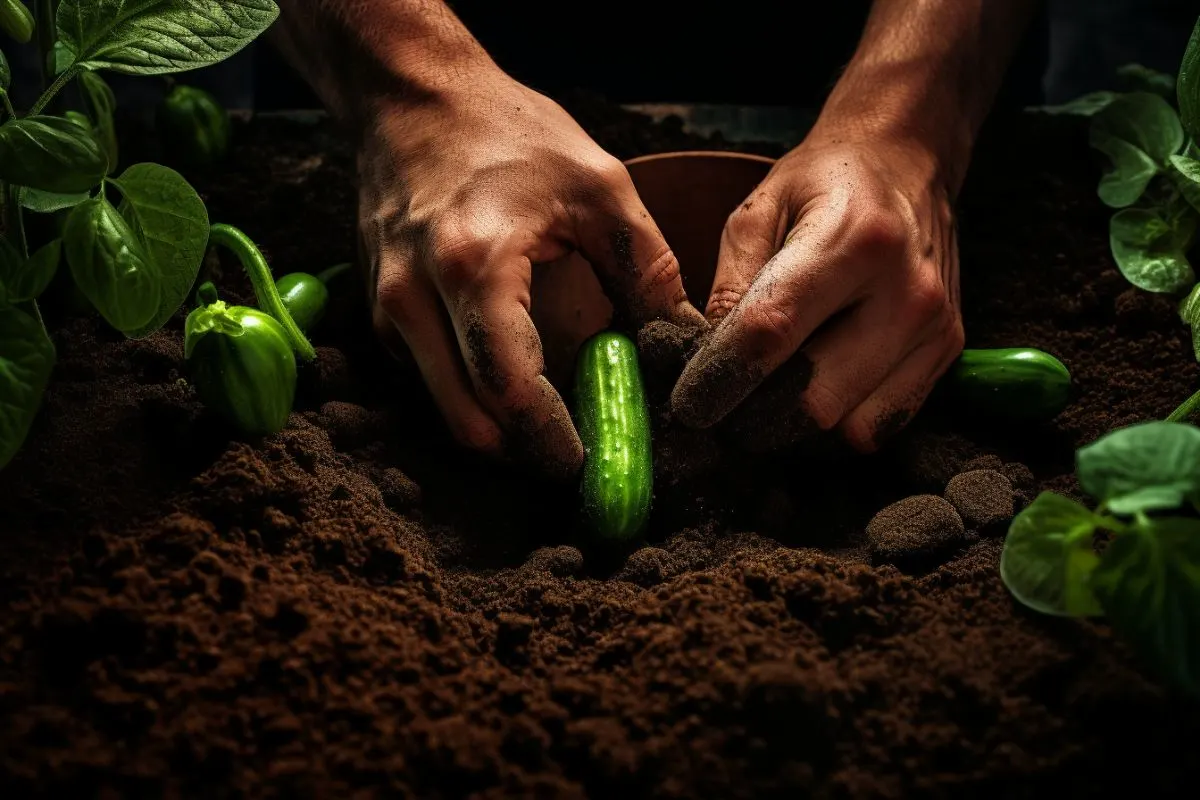
When it comes to planting cucumbers, timing is everything. Ideally, you’ll want to sow seeds directly into the ground after the last frost, when the soil has warmed to at least 60°F (15°C). If you’re eager to get a head start, you can begin seeds indoors about 3-4 weeks before transplanting. When planting:
- Spacing: Plant seeds about 1 inch deep, and if sowing in rows, space seeds about 12 inches apart with rows 3 feet apart. For those who prefer hills, plant 4-5 seeds in each hill, with hills spaced about 3 feet apart.
- Trellising: Consider using a trellis or stake for vining varieties. This not only saves space but also keeps the cucumbers clean and makes harvesting easier.
Light
Cucumbers love sunlight. They require a minimum of 6-8 hours of direct sunlight daily. If you’re growing cucumbers in containers or a space with limited sunlight, ensure they’re positioned where they can get the most sun exposure. An occasional shade during the hottest part of the day can help prevent them from getting sunburned.
Soil
The ideal soil for cucumbers is well-draining, rich in organic matter, and slightly acidic to neutral (pH of 6.0 to 7.5). Before planting, I always enrich my garden beds with compost or well-decomposed manure. This not only feeds the soil but also improves its texture.
Water
Consistent moisture is key. Cucumbers are predominantly water, so they need a steady supply. Aim for about 1 to 1.5 inches of water per week, either from rainfall or irrigation.
Watering at the base of the plant rather than overhead reduces the chances of fungal diseases. Remember, deep and less frequent watering is better than shallow and frequent sprinkles.
Temperature and Humidity
Cucumbers thrive in warm temperatures. The sweet spot lies between 70°F and 90°F (21°C to 32°C). If temperatures consistently drop below 50°F (10°C) or rise above 95°F (35°C), the plant may become stressed, affecting fruit production.
High humidity can be a friend and foe. While it can promote quick growth, it can also increase the risk of diseases like powdery mildew. Ensure proper spacing and airflow to mitigate this risk.
Fertilizer
A balanced fertilizer, like a 10-10-10 (N-P-K), applied at planting and again when the plants start to bloom, works wonders. I also like to supplement with a side dressing of compost or organic matter halfway through the growing season. Be careful not to over-fertilize, as this can lead to lush foliage but fewer fruits.
Harvesting Cucumbers
One of the most rewarding moments in gardening is finally harvesting the fruits of your labor. For cucumbers:
- When to Harvest: Generally, cucumbers are best harvested before they get too large, as oversized ones can become bitter. Depending on the variety, this might be when they’re between 4 to 8 inches long. The skin should be firm and green.
- How to Harvest: Using a sharp knife or pruning shears, cut the cucumber from the vine, leaving a small stub of the stem attached. It’s essential to harvest regularly since leaving mature cucumbers on the vine can deter the plant from producing more.
Pruning
Pruning your cucumber plants can encourage better air circulation and make harvesting easier:
- Leaves: I’d suggest removing yellow or diseased leaves regularly. It helps prevent potential fungal issues and gives the plant more energy to produce fruits.
- Lateral Vines: Especially for trellised plants, pruning the lateral vines after 3-4 leaves can concentrate growth on the main vine.
Propagating
Cucumbers are typically propagated from seeds, but if you’ve got a particularly vigorous plant, you might consider trying vegetative propagation:
- Cuttings: While not as common, you can take stem cuttings from cucumber plants. Choose a healthy stem, cut a 4-inch segment, and place it in rooting hormone before planting in a soilless medium. Keep the medium moist and provide warmth until roots develop.
How to Grow Cucumbers From Seed
Starting cucumbers from seed is straightforward:
- Indoor Starting: About 3-4 weeks before the last expected frost, sow seeds in biodegradable pots or seed trays. Plant them 1 inch deep, water, and place them in a warm location. Once seedlings have 2-3 leaves and the risk of frost has passed, transplant them outdoors.
- Outdoor Direct Sowing: Once the soil warms to at least 60°F, sow seeds directly in the garden. Make sure to space accordingly based on whether you’re planting in rows or hills.
Growing in Pots
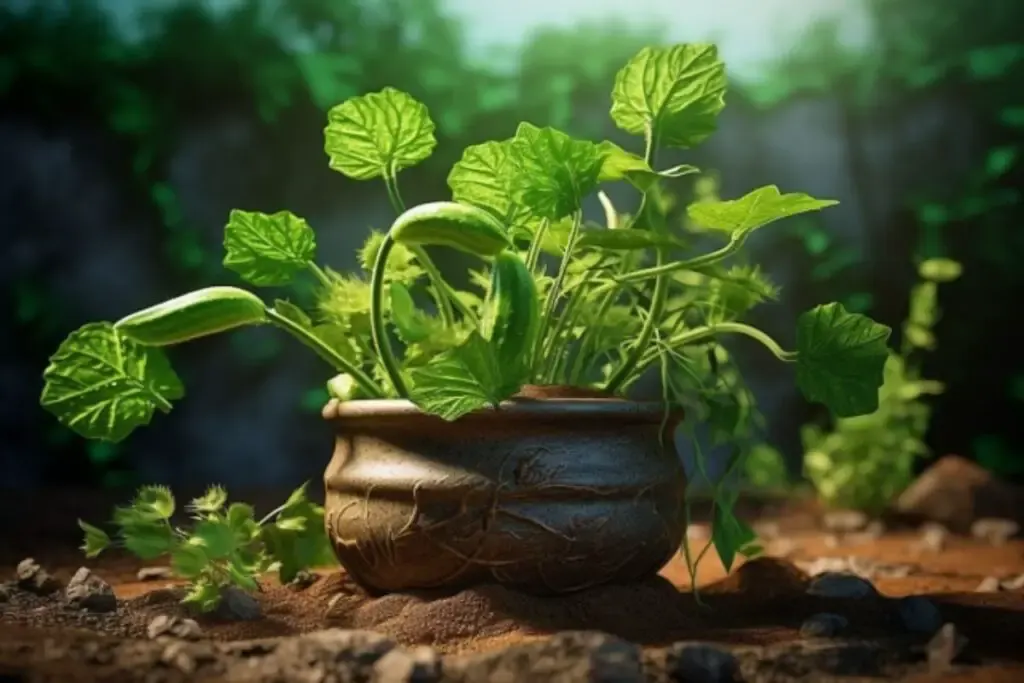
Short on space? No worries! Cucumbers can thrive in pots:
- Choosing a Container: Opt for a large container, at least 12 inches deep. Ensure there’s proper drainage to prevent waterlogged soil.
- Soil: Use a well-draining potting mix, enriched with compost or organic matter.
- Planting: Plant 2-3 seeds per pot. Once they germinate and grow a few inches tall, thin to the strongest seedling.
- Support: Even in pots, vining cucumber varieties will benefit from a small trellis or stake to climb.
Read More: How to Grow Cucumbers in Pots Like an Expert
Overwintering
Cucumbers are heat-loving plants, which means they don’t fare well in the cold. However, if you’re thinking about getting a head start on the next season or want to keep a particularly robust plant going, here’s what you should know:
- Seeds and Seedlings: If you’ve harvested seeds or have young plants, you can certainly overwinter them indoors. Store seeds in a cool, dry place and keep seedlings in a sunny window, ensuring they get at least 6 hours of sunlight.
- Mature Plants: Honestly, most gardeners will tell you it’s not worth the effort to overwinter mature cucumber plants because they’re annuals and naturally have a single-season life cycle. But if you’re up for an experiment, try moving your pot-grown cucumber plants indoors. They’ll need ample sunlight and consistent warmth.
Transplanting
Moving your cucumber plants can be a bit tricky since they dislike having their roots disturbed:
- The Right Time: If you started your cucumbers indoors, wait until they have at least two sets of true leaves and the last frost has passed.
- Preparation: Harden off indoor-grown seedlings by exposing them to outdoor conditions for a week, gradually increasing the amount of sunlight and outdoor time.
- Transplanting Technique: Dig a hole slightly larger than the seedling’s root ball. Gently remove the seedling from its pot, ensuring you disturb the roots as little as possible. Place it in the hole, and backfill it with soil, and water immediately.
Common Pests & Diseases
Ah, the challenges of gardening! But fret not, with some knowledge under your belt, you can tackle most issues head-on:
Pests
- Cucumber Beetles: These yellow-green pests can spread diseases. Use floating row covers to prevent them, but remember to remove the covers once plants start flowering to allow pollination.
- Aphids: These small pests suck plant sap, weakening your cucumbers. A strong water spray can knock them off, or introduce beneficial insects like ladybugs.
Diseases
- Powdery Mildew: This appears as a white powdery substance on leaves. To prevent, ensure good air circulation and avoid overhead watering. If it appears, consider a fungicidal spray.
- Bacterial Wilt: Transmitted by cucumber beetles, this causes plants to wilt and die. Unfortunately, there’s no cure, so prevention is crucial. Remove and destroy affected plants.
Stay vigilant and inspect your plants regularly. The sooner you catch and address these issues, the better chance your cucumbers have of thriving. Remember, gardening is as much about the journey as it is about the destination. Embrace the challenges and savor the rewards!

